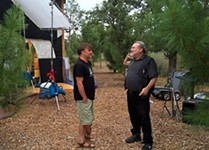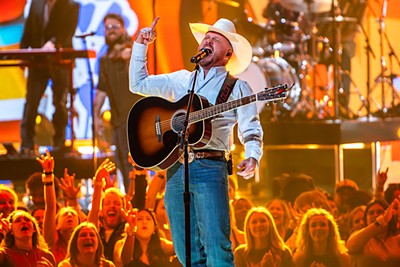Imagining the Real
UT's East Austin Stories documents evolving landscape
By Sean L. Malin, Fri., May 6, 2016
Over the past 15 years, the University of Texas has devoted an entire course in the Radio-Television-Film department to chronicling the evolution of East Austin. The student filmmakers pitch their stories to classmates, and group up to turn them into creative nonfiction cinema that screens at the end of each semester.
Professor Andrew Garrison, who originated the idea after joining the university in 1997, says, "Since the beginning, the two rules have been: The students have to find the stories; and the stories have to take place on the other side of I-35." At this year's screenings on Thursday, May 12, the East Austin Stories class will present short documentaries for two screenings before the films become available online. Garrison's course has always been "a freewheeling program," according to the professor. But in the midst of both the city's explosive growth and the wider current sociopolitical atmosphere, the impulse to develop, produce, and screen these films locally has grown into an inclusive community project.
When Garrison got to Texas, he had "come from the South, from an integrated city in Kentucky. I expected there to be a lot of people in Austin who looked different from one another." But he was "shocked" to find out how things looked, specifically west of I-35. "I asked my sister-in-law, 'Where is everybody? Where are the brown people? Where are the black people?'" In response, Garrison was introduced to a Ph.D. student, Miguel Guajardo, and eventually to Juan Valadez, a minister. Their casual conversations soon evolved into full-blown dialogues (and breakfasts, thanks to Guajardo) with "cops, restaurant owners, normal people" about the multivariable communities thriving in East Austin. Remarks Garrison, "It was like, 'Yeah, this is great. Austin isn't just a whites-only kind of place.'"
On the east side of the interstate, the range of people reflected a diversity of craft, with new Central European immigrants setting up nascent businesses while fourth-generation Spanish and Mexican students developed public art. Yet "those kinds of stories were not really visible in the mass media," which conflicted strongly with Garrison's notion that "there are lots of incredible stories, strong stories, everywhere." As he tells it, the idea for East Austin Stories was born from this particular disconnect: Documentarians would learn "how to work with people and tell other people's stories" than the ones cluttering up regional news.
Early class projects like "La Casa Lopez," about a long-term resident fighting off developers, and "Pool Rats," an Errol Morris-like day with children at Rosewood Pool, demonstrated the students' humanistic and expansive approaches to East Austin's public image. As youth media, projects like these are doubly essential: They become tools for socioeconomic discourse, as well as for cinematic representation. And while Garrison is "very careful to say: This is not social work," this year's series looks to be one of the most culturally inclusive in the program's history. "Community First," for instance, looks into community-style housing "for the chronically homeless and disabled" just eight miles east of Downtown Austin. On the same bill, "12th and Chicon" uses the eponymous intersection for an audiovisual discourse on "cultural convergence."
This week's event is therefore both end-of-semester screening and celebration of the fact that, since its inception, East Austin Stories has evolved from a summer session into a semester-long media-making venture for undergraduates. Garrison credits this to the demeanors of the filmmakers: "When [students] like these come into the production program, they do it not just to make cool stuff ... they want to have done something in the world. They want to help."
East Austin Stories screens Thursday, May 12, 7pm, at Our Lady of Guadalupe Church Parish Hall, and at 9:15pm at Kenny Dorham's Backyard. For more info, see rtf.utexas.edu/eas.











